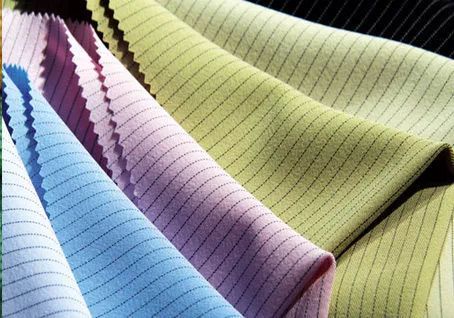Can digital printing replace screen printing? What’s the difference between the two?
background
Traditional printing and dyeing The business model of “three highs and one low” (high consumption, high pollution, high emissions, low added value) has become a red ocean, and the market space is gradually shrinking. The digital printing process has the characteristics of low pollution, low consumption, high added value, and flexible production, which conforms to the green, environmentally friendly, and sustainable development trend, and also caters to the fast development trend of “small batches, multiple varieties, and short delivery times.” The fashionable style is in line with the transformation and development of the printing and dyeing industry in the future.
Moreover, as an alternative process to traditional printing, digital printing can now be widely used in clothing, home textiles, industrial textiles and other fields, and is suitable for cotton, wool, silk, linen, polyester, nylon and other fibers and blends. There is no doubt that digital printing has a very bright future and has become one of the few high-profit industries in the current market, attracting many investors to enter this field. Experts predict that the next few years will be a golden period for the development of digital printing in my country.
but
Can digital printing really replace screen printing? What are the differences between these two printing processes, and how to understand and choose? The following is a detailed analysis and interpretation of the technical characteristics and development prospects of digital printing and screen printing.
Printing
Printing refers to the use of dyes or paints to form graphics on the surface of fabrics. With the development of printing technology, a pattern has been formed in which various printing processes such as screen printing, rotary screen printing, roller printing, and digital printing coexist with each other. Various printing processes have different application ranges, process characteristics, and printing equipment and consumables used.
As a traditional classic printing process, screen printing has a wide range of applications and accounts for a relatively high proportion in the printing industry. In recent years, digital printing has developed rapidly, and many people believe that there will be a trend to replace screen printing. What are the differences between these two printing processes? Here is an analysis of the differences between digital printing and screen printing.
There is little difference in the types of printing materials
Digital printing is divided into five categories: acid digital printing, reactive digital printing, paint digital printing, dispersed thermal transfer printing and dispersed direct injection digital printing.
Digital printing acid ink is suitable for fabrics such as wool, silk and other protein fibers and nylon fibers.
Digital printing reactive dye ink is mainly suitable for digital printing of cotton, linen, viscose fiber, silk and other fabrics, and can be used for digital printing of cotton fabrics, silk fabrics, wool fabrics and other natural fiber fabrics.
Digital printing paint ink is suitable for digital inkjet paint printing of cotton fabrics, silk fabrics, chemical fiber and blended fabrics, knitted fabrics, sweaters, towels, and blankets.
Digital printing thermal transfer ink is suitable for transfer printing on polyester, non-woven fabrics, ceramics and other materials.
Digital printing direct-injection dispersed ink is suitable for digital printing of polyester fabrics, such as decorative fabrics, flag fabrics, banners, etc.
Traditional screen printing does not have much advantage over digital printing in terms of the types of printing materials. First, there are limitations in the size of the printing format of traditional printing. The inkjet width of large-scale industrial digital inkjet printers can reach up to 3 to 4 meters, and they can print continuously with no limit on length. They can even form an entire production line; 2. On some materials, traditional water-based ink printing cannot achieve better performance. For this reason, solvent-based ink can only be used for printing. Digital printing can use water-based ink for inkjet printing on any material, thus avoiding large-scale use. Flammable and explosive non-environmentally friendly solvent.
There is not much difference between screen printing and digital printing in the types of printing materials. However, the printing format size of traditional printing has limitations; on some materials, screen printing can only use flammable and explosive non-environmentally friendly solvent-based inks for printing.
Digital printing makes colors more vivid
color
The biggest advantage of digital printing is mainly focused on the fineness of colors and patterns. First of all, in terms of color, digital printing inks are divided into dye-based inks and pigment-based inks. Dyes have bright colors and are better than pigments.
Acid digital printing, reactive digital printing, dispersed thermal transfer printing and dispersed direct injection digital printing all use dye-based inks.
Although paint digital printing uses pigments as colorants, they all use nano-scale…For code printing production, the purchase cost of these models is much cheaper than other models.
The second is a printer equipped with Epson DX4/DX5/DX6/DX7 series inkjet print heads. Among them, DX5 and DX7 are the most common, such as MIMAKI JV3-160, MUTOH 1604, MUTOH 1624, EPSONF 7080, EPSON S30680, etc. These models each The purchase cost of a printer is about 100,000 yuan. Currently, the market price of DX4 print heads is 4,000 yuan each, the market price of DX5 print heads is more than 7,000 yuan each, and the market price of DX7 print heads is 12,000 yuan each.
The third is industrial inkjet digital printing machines. Representative machines include Kyocera industrial nozzle digital printing machines, Seiko SPT nozzle digital printing machines, Konica industrial nozzle digital printing machines, SPECTRA industrial nozzle digital printing machines, etc. The purchase cost of printers is generally relatively high. high. The single market price of each brand of print head is more than 10,000 yuan, and one print head can only print one color. In other words, if you want to print four colors, four print heads must be installed on one machine, which is extremely expensive.
Therefore, the cost of digital printing equipment is extremely high, and inkjet print heads, as the main consumables of digital inkjet printers, are also extremely expensive. The market price of digital printing ink is indeed much higher than that of traditional printing materials, but the printing area of 1 kilogram of ink output is incomparable to the printing area of 1 kilogram of ink. Therefore, the cost comparison in this regard also depends on the type of ink used, specific printing requirements, printing process and other factors.

In traditional screen printing, the screen and squeegee are consumables during manual printing, and the labor cost is more significant at this time. Among traditional printing machinery, imported octopus printing machines and elliptical machines are more expensive than domestic ones, but domestic models have become more and more mature and can meet production and use requirements. If you compare it with an inkjet printing machine, its purchase cost and maintenance cost are much lower.
Screen printing needs to improve environmental protection
In terms of environmental protection, the environmental pollution caused by traditional screen printing is mainly reflected in the following aspects: the amount of waste water and waste ink generated during the production process is quite large; in the printing production process, more or less bad materials need to be used Solvents and even plasticizers (thermoset inks may add non-environmentally friendly plasticizers), such as printing water, decontamination oil, white electric oil, etc.; printing workers will inevitably be exposed to chemical solvents, Glue, toxic cross-linking agents (catalysts), chemical dust, etc., have an impact on workers’ health.

In the digital printing production process, a certain amount of waste liquid will only be generated during the pre-processing, sizing and post-processing washing processes. Waste ink is rarely generated during the entire inkjet printing process. The overall source of pollution is less than that of traditional printing, and it has less impact on the environment and the health of those who come into contact.
Summarize
Digital printing has a wide range of printing materials, and the printed products have bright colors, fine patterns, good hand feel, and strong environmental protection, which are its typical characteristics. However, inkjet printing machines are expensive, with high consumables and maintenance costs, which are its disadvantages. It is difficult to improve the washing fastness and rubbing fastness of digital printing products; it is difficult to develop stable white ink, which results in the inability to print better on black and dark fabrics; due to the constraints of inkjet print heads, it is difficult to develop stable white ink. Printing inks with special effects; printing sometimes requires pre- and post-processing, which is more complicated than traditional printing. These are the disadvantages of current digital printing.
If traditional screen printing wants to develop steadily in today’s printing industry, it must grasp the following points: improve the environmental protection of printing inks and control environmental pollution in printing production; improve existing special printing effect printing, and develop new printing special effects , leading the printing trend; keeping up with the 3D craze, developing a variety of 3D printing effects; while maintaining the washing and rubbing color fastness properties of printed products, developing digital-like feel-free, light and thin printing effects in conventional printing; developing wide-width printing Plan, and to continuously improve printing efficiency and production capacity, it is best to develop a printing assembly line platform; simplify printing equipment, reduce consumable investment, improve printing input-output ratio, and enhance the competitive advantage with digital printing.
Digital printing and screen printing each have their pros and cons. At present, digital printing cannot replace screen printing.
However, digital printing will be an unforgettable change. Although digital printing technology still has some shortcomings compared with screen printing, it cannot conceal the huge advantages it will bring.
There are still some shortcomings, but they cannot cover up the huge advantages it will bring.





